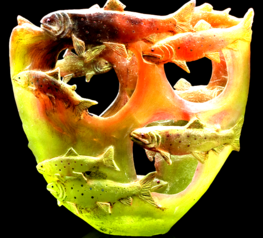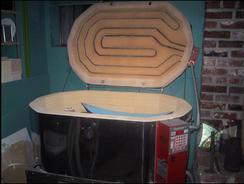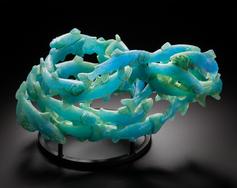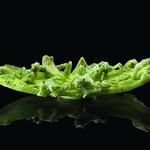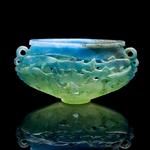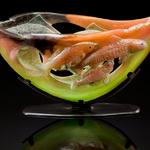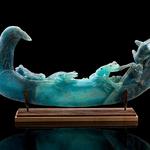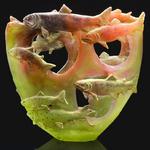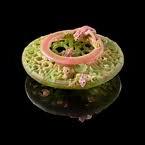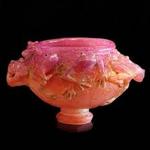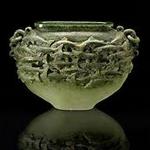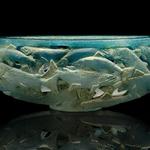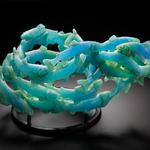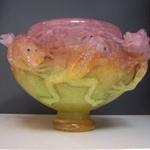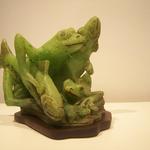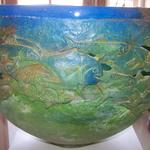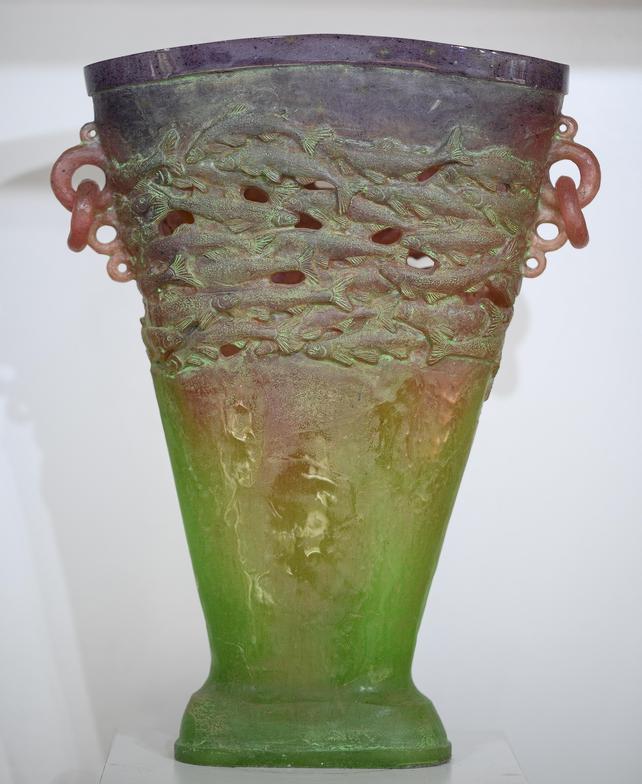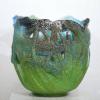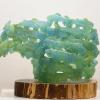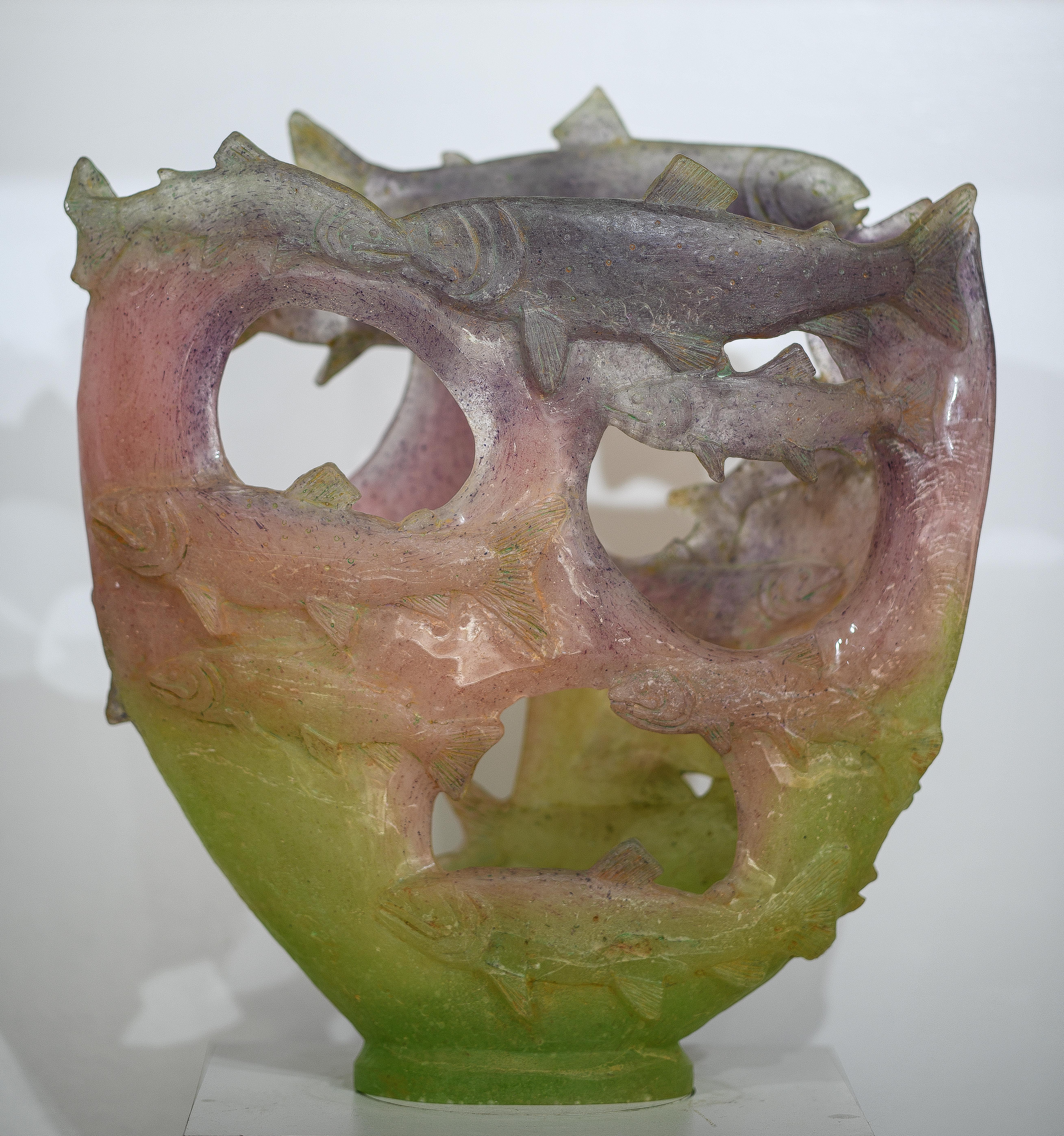Call us 505.988.2165
CAST GLASS
First an original is made from carving wax, porcelain or clay. Then a rubber mold is made from the original. The wax piece is then placed in a wooden form and completely covered with a soft plaster investment, being sure to leave steam hole (or airvents). Next the wax is melted out by forcing steam through the steam holes. Then the mold is left to dry.
At this point I have a large block of plaster with a negative image of my art piece inside. The mold is then placed in a large electric kiln. Next the mold is filled with glass that has been ground down into fine powder. The kiln is then gradually heated up, often reaching temperatures as high as 1600 degrees. Slowly the glass melts down throughout the piece and into the detailed negative imprints.
When the melting process is complete (15-25 days; depending on the piece), the temperature of the kiln is gradually taken down. The annealing cycle of 1-2 1/2 weeks allows the glass to cool slowly and evenly; therefore avoiding cracking. Finally, after the cooling process is complete, the plaster is carefully removed from around the piece. The last step is to polish the piece using small sanding blocks that have been impregnated with diamond chips (diapads). These diapads grind out the remaining plaster and other impurities on the surface of the glass.
All my castings are 24% lead crystal which sometimes gives them a unique texture often resembling stone, but still holding all of the attractions of glass.
The Process
Click an image
The Gallery
A Sample of Our Current Cast-Glass Inventory
Cape Trout
Koi Pool
Helix Trout
Salmon Run

